Are you tired of constantly replacing your dog’s bed due to chewing and tearing?
Are you looking for a long-lasting, indestructible dog bed that will withstand even the most persistent chewers?
Look no further, as we’ve got you covered! In this article, we’ll provide you with a step-by-step guide on how to make an indestructible dog bed that your furry friend will love.
Understanding the Need for an Indestructible Dog Bed
Before we delve into the construction process, let’s first understand why an indestructible dog bed is necessary. Dogs are known for their chewing habits, and this can cause a lot of damage to their beds.
A normal bed made of foam or other soft materials can quickly become a chew toy, resulting in shredded foam, torn fabric, and even potential ingestion of harmful materials.

An indestructible dog bed is made with materials that can withstand the toughest chewing and last longer, making it a cost-effective solution in the long run.
Before knowing let see what makes a dog bed indestructible?
Here check out how to stop your dog pooping on your bed.
What makes a dog bed indestructible?
An indestructible dog bed is designed to withstand heavy wear and tear and to be durable enough to last for a long time, even with frequent use. Several factors contribute to making a dog bed indestructible.
The materials used in constructing the bed play a significant role in its durability. Heavy-duty fabrics like ballistic nylon, Cordura, or canvas are commonly used in indestructible dog beds.
These materials are resistant to abrasion, tearing, and chewing, which makes them ideal for dogs that are strong chewers or scratchers.
The bed’s construction also affects its durability. Beds made with reinforced stitching, double-layered fabrics, and heavy-duty zippers are more likely to hold up against rough play and heavy use.
The bed’s design should also be considered to ensure that it can support the weight of the dog and withstand constant movement.
Another important factor in an indestructible dog bed is the filling. Beds with high-density foam or orthopedic foam provide more support and are more resistant to compression than traditional filling materials like cotton or polyester.
A bed with good quality foam will retain its shape and support even after repeated use. Now let see what material you need in order to make indestructible dog bed.
Materials Needed
To make an indestructible dog bed, you will need the following materials:
- Heavy-duty canvas fabric
- Denim fabric
- Thread
- Sewing machine
- Scissors
- Ruler or measuring tape
- Polyfil stuffing
- Zipper (optional)
14 Step Process to make indestructible dog bed
- Measure and cut the canvas fabric to the desired size of the bed.
- Cut two pieces of denim fabric to the same size as the canvas fabric.
- Sew the two pieces of denim fabric together, leaving one end open. Turn it inside out to create a denim casing.
- Stuff the denim casing with polyfil stuffing.
- Sew the open end of the denim casing closed.
- Place the denim casing on top of the canvas fabric, with the closed end facing up.
- Sew around the edges of the denim casing, attaching it to the canvas fabric.
- Cut a piece of canvas fabric to create a pillowcase for the bed.
- Sew the pillowcase, leaving one end open.
- Stuff the pillowcase with polyfil stuffing.
- Sew the open end of the pillowcase closed.
- Place the pillow inside the denim casing.
- Sew a zipper onto the open end of the denim casing (optional).
- Your indestructible dog bed is now complete!
Tips for Making a Durable Dog Bed
- Use heavy-duty materials, such as canvas or denim.
- Reinforce all seams with multiple rows of stitching.
- Choose a polyfil stuffing that is dense and firm.
- Add a zipper to the bed for easy removal and cleaning.
How Are Indestructible Dog Beds Built?
Heavy-duty Materials
Indestructible dog beds are built using heavy-duty materials that are designed to withstand the wear and tear of regular use. Here are some of the common materials used in building indestructible dog beds:

- Ballistic Nylon – This material is extremely durable and resistant to tearing and chewing. It is commonly used in military gear and is ideal for dogs that are strong chewers or scratchers.
- Cordura – Cordura is a type of fabric that is highly resistant to abrasion, punctures, and tears. It is a popular material for outdoor gear and is a great choice for dogs that spend a lot of time outside.
- Canvas – Canvas is a sturdy material that is often used in the construction of heavy-duty dog beds. It is resistant to tearing, water, and stains, making it an excellent choice for dogs that are prone to accidents.
- PVC – PVC is a plastic material that is resistant to punctures and tearing. It is commonly used in inflatable dog beds and is a great option for dogs that love to chew.
- Ripstop Nylon – Ripstop nylon is a material that is commonly used in the construction of outdoor gear. It is highly resistant to tearing and punctures, making it a great choice for dogs that love to chew.
In addition to these materials, indestructible dog beds are often reinforced with double-stitching, heavy-duty zippers, and reinforced corners to provide extra strength and durability.
By using these heavy-duty materials and construction techniques, indestructible dog beds are built to withstand the most active and playful dogs and provide a comfortable and durable sleeping surface for years to come.
Smart Design Engineering
In addition to heavy-duty materials, indestructible dog beds are also built with smart design engineering to provide maximum durability and support.
Here are some features that are commonly found in indestructible dog beds:
- Reinforced corners – The corners of the bed are often reinforced with additional fabric or stitching to prevent tearing and fraying.
- Double-layered fabric – Beds may have double-layered fabric in high-wear areas such as the sides and bottom to provide extra strength and support.
- Non-skid bottom – Beds may have a non-skid bottom to prevent sliding and provide additional stability.
- Raised edges – Beds with raised edges provide a secure and cozy sleeping space for dogs while also preventing chewing and scratching.
- Chew-resistant zippers – Heavy-duty zippers that are designed to resist chewing and tearing are often used to provide extra durability.
- Removable covers – Many indestructible dog beds have removable covers that can be washed or replaced to extend the life of the bed.
- Orthopedic support – Some indestructible dog beds are designed with orthopedic support to provide extra comfort and support for dogs with joint issues or arthritis.
By incorporating these design features, indestructible dog beds are built to withstand heavy use and provide a comfortable and durable sleeping surface for even the most active and playful dogs.
Here you can check out can you put foam bed in the dryer.
Durable Canvas
Canvas is a popular material used in the construction of indestructible dog beds because of its durability and resistance to tearing, water, and stains.
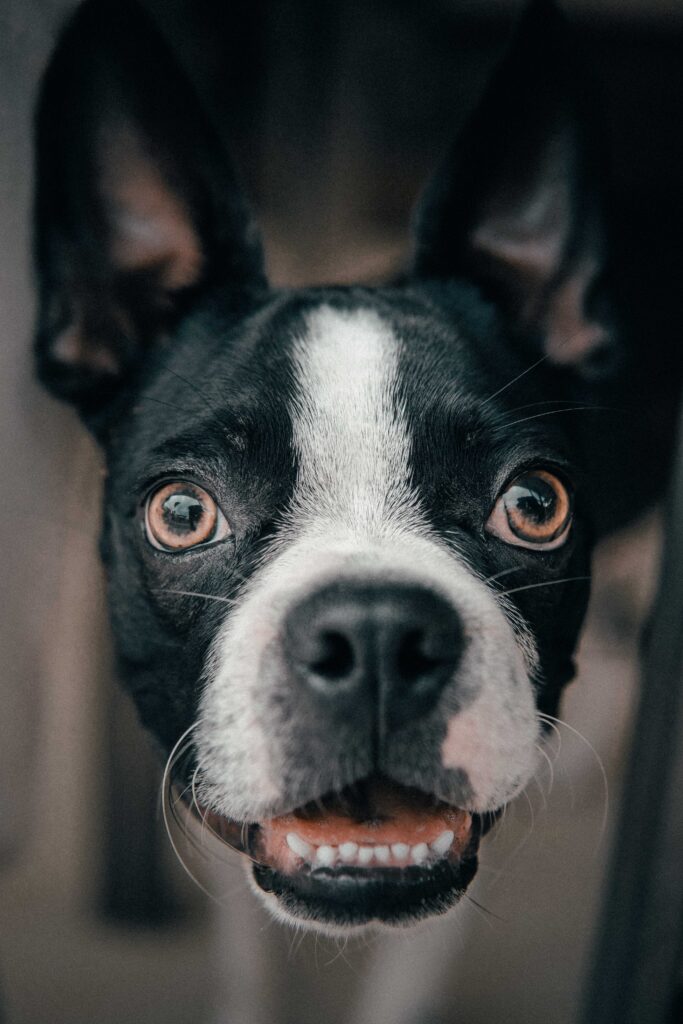
Here are some ways in which durable canvas is used in the construction of indestructible dog beds:
- Outer cover – Many indestructible dog beds have an outer cover made of canvas that is resistant to tearing and chewing. This cover protects the inner padding and provides a sturdy surface for dogs to sleep on.
- Reinforced seams – The seams of the bed are often reinforced with extra stitching to prevent tearing and fraying, especially in high-stress areas.
- Waterproofing – Some canvas materials are treated with a waterproof coating to prevent water damage and make cleaning easier.
- Heavy-duty zippers – Canvas beds may have heavy-duty zippers that are resistant to chewing and tearing to provide extra durability.
- Replacement covers – Many indestructible dog beds have removable and replaceable canvas covers, allowing for easy cleaning and extending the life of the bed.
Overall, durable canvas is an excellent material for indestructible dog beds as it provides both durability and comfort for dogs.
Its resistance to tearing, water, and stains makes it an ideal choice for dogs that are active and prone to accidents.
How to make a DIY chewproof dog bed?
Making a DIY chewproof dog bed requires careful selection of materials and construction techniques.
Here are some steps you can follow to make your own DIY chewproof dog bed:
Materials:
- Heavy-duty canvas or ballistic nylon fabric
- Industrial-strength thread
- Heavy-duty zipper
- Polyurethane foam or other durable stuffing material
- Scissors
- Sewing machine
Instructions:
- Measure your dog’s length and width to determine the size of the bed you need to make.
- Cut two pieces of heavy-duty canvas or ballistic nylon fabric to the desired size of the bed.
- Sew the two pieces of fabric together, leaving one end open for the stuffing.
- Install a heavy-duty zipper at the open end to allow for easy stuffing and removal of the stuffing material.
- Stuff the bed with polyurethane foam or other durable stuffing material, making sure to pack it tightly.
- Sew the open end closed using industrial-strength thread and double stitching for added durability.
- Optional: Add a raised edge to the bed by cutting strips of fabric and sewing them around the edges of the bed.
Tips:
- Make sure to choose heavy-duty materials that are resistant to tearing and chewing.
- Use industrial-strength thread and double stitching for added durability.
- Consider adding a waterproof coating to the fabric to protect against accidents and spills.
- Test the bed for durability by having your dog try it out before regular use.
By following these steps and using durable materials, you can create a DIY chewproof dog bed that will withstand even the toughest chewers and provide a comfortable and durable sleeping surface for your furry friend.
Let’s move to some related faq’s
Related faq’s
What material can a dog not chew through?
Dogs have strong jaws and teeth that are capable of chewing through a variety of materials. However, there are some materials that are less likely to be chewed through by dogs.
For example, metal and heavy-duty plastics can be difficult for dogs to chew through.
Materials like stainless steel, aluminum, and hard rubber are often used to make dog toys, chew bones, and other products designed to withstand a dog’s chewing.
Additionally, some fabrics such as canvas and denim can be tough enough to resist a dog’s chewing, though this can depend on the individual dog’s strength and determination.
It’s important to note that even with durable materials, some dogs may still be able to chew through them if given enough time and motivation.
It’s always a good idea to supervise dogs when giving them chew toys or other items to play with, and to regularly inspect these items for signs of damage or wear.
What is the strongest material for a dog bed?
The strongest material for a dog bed will depend on the size, weight, and chewing habits of your particular dog. However, some materials that are commonly used in durable dog beds include:
- Ballistic Nylon: This heavy-duty fabric is often used in military gear and is designed to resist tears, punctures, and abrasions.
- Canvas: Canvas is a tough, durable material that can withstand a lot of wear and tear. It’s also easy to clean and maintain.
- Cordura: Similar to ballistic nylon, Cordura is a high-strength fabric that is often used in outdoor gear and luggage.
- Memory Foam: Memory foam is a dense, supportive material that can help distribute your dog’s weight evenly and relieve pressure on their joints. It’s also durable and can hold up well over time.
When choosing a dog bed, it’s important to consider not only the strength of the material but also factors like comfort, size, and support for your dog’s needs.
Additionally, if your dog is a heavy chewer, it’s important to supervise them when using their bed and to choose a material that is less likely to be destroyed by their chewing.
Is there a bed that a dog can’t rip?
There is no guarantee that a dog will not be able to rip any bed. However, there are some beds that are designed to be more resistant to chewing and tearing, which may help to reduce the likelihood of damage. Here are some options to consider:
- Elevated dog beds: These are beds that are raised off the ground on a metal or PVC frame. They are often made of durable, breathable fabric like ballistic nylon or mesh. Since they are off the ground, they can be more difficult for a dog to chew on.
- Chew-resistant dog beds: Some manufacturers make beds with special materials and construction techniques designed to make them more resistant to chewing and tearing. These beds may be made of materials like Cordura or heavy-duty canvas and have reinforced stitching.
- Heavy-duty orthopedic dog beds: These beds are designed to be both supportive and durable. They often have a solid foam core or memory foam base that can stand up to heavy use, and are covered with a chew-resistant material.
It’s important to keep in mind that even with a bed that is more resistant to chewing, some dogs may still be able to damage it if they are determined enough.
If your dog is a heavy chewer, it’s a good idea to supervise them when using their bed and to provide plenty of appropriate chew toys to redirect their chewing behavior.
What are indestructible dog beds made out of?
Indestructible dog beds are typically made out of materials that are resistant to chewing and tearing. Some common materials used in these types of beds include:
- Ballistic Nylon: This is a high-strength fabric that is often used in military gear and luggage. It’s designed to resist punctures, tears, and abrasions, and is a popular choice for indestructible dog beds.
- Cordura: Cordura is a type of nylon fabric that is known for its durability and resistance to wear and tear. It’s often used in outdoor gear and luggage, and can also be a good choice for dog beds.
- Heavy-Duty Canvas: Canvas is a thick, sturdy material that can stand up to a lot of wear and tear. It’s often used in industrial applications, and can also be a good choice for an indestructible dog bed.
- PVC or Metal Frames: Some indestructible dog beds have frames made of metal or PVC, which can make them more difficult for dogs to chew through. The bed surface may be made of one of the durable fabrics mentioned above.
- Memory Foam: Indestructible dog beds may also be made with memory foam, a dense, supportive material that can hold up well over time. Memory foam can provide comfort and support for dogs, while also being resistant to damage from chewing and scratching.
It’s important to note that even with these materials, no bed is truly indestructible. Dogs with strong chewing habits or a tendency to destroy their bedding may still be able to damage or destroy even the toughest bed.
Additionally, it’s important to choose a bed that is appropriate for your dog’s size and weight to ensure maximum durability.
Conclusion:
In conclusion, creating an indestructible dog bed is a worthwhile investment for any pet owner.
By selecting durable materials, such as ballistic nylon or heavy-duty canvas, and reinforcing seams and zippers, you can ensure your dog’s bed will last for years to come.
Additionally, incorporating chew-resistant features, such as metal frames or chew-proof coatings, can provide added protection against destructive behavior.
But don’t just take our word for it! Have you tried making an indestructible dog bed for your furry friend?
What materials and techniques did you use? Share your experiences in the comments section below and let’s keep the conversation going.
And if you’re still looking for more tips and tricks on how to keep your dog happy and healthy, be sure to check out our other helpful blog posts.


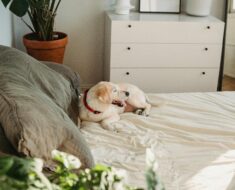

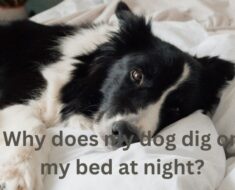
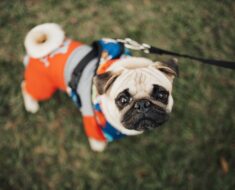
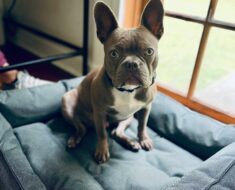
very interesting article I really like it, thanks for sharing
Thanks for your comment! Stay connected..